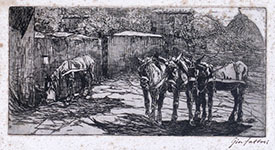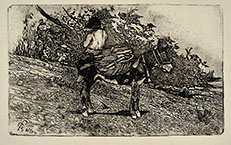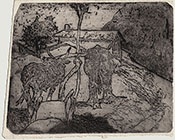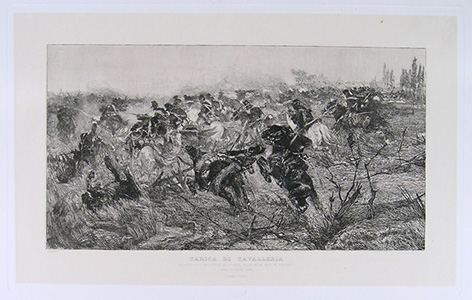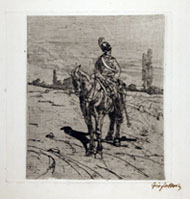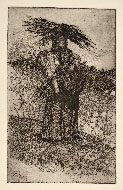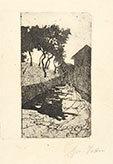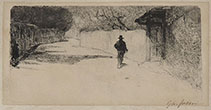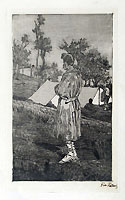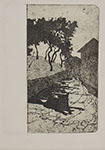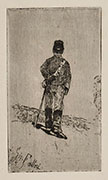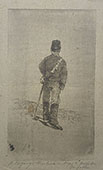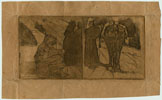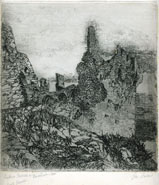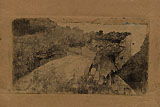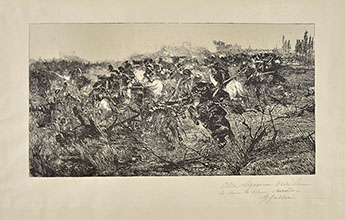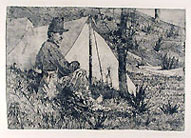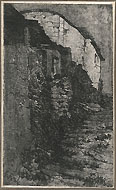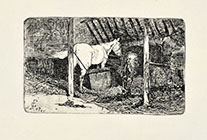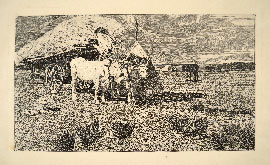(Livorno 1825 - Florence 1908)
166 ACQUEFORTI DI GIOVANNI FATTORI, the complete portfolio of the 'Tiratura del Centenario', 1925
166 original etchings published in Florence by Benaglia in 1925.
Editorial loose-leaf binder (mm 518x380) containing 166 original etchings.
Single edition of 50 copies with stamped numbering in the introductory insert signed in pen by Giovanni Poggi, editor of the edition.
Exemplar n. 33/50.
Light green hardback editorial folder with three flaps closed by 4 fabric strings, bearing a printed facsimile of the artist's signature on the front plate.
Unbound 6-page insert containing editorial frontispiece, introductory essay and list of plates.
166 etchings printed on laid paper with unbroken margins, watermark embattled crown with UMBRIA/ITALY inscription and countermark with CP letters inscribed in a double oval; each etching bears the embossed stamp Centenario/Gio.Fattori/1925 and the progressive numbering of the plates in pencil.
On September 6th 1925, the centennial of Giovanni Fattori's birth, the publisher Benaglia of Florence published the collection of 166 etchings, commonly referred to as the Tiratura del centenario. The 166 subjects were printed from 164 original plates (some engraved on both sides) owned by Giovanni Malesci, the universal heir of the artist. After printing, the plates were donated to the Gabinetto Disegni e Stampe degli Uffizi, where they are still kept today.
They were excluded from this set 19 subjects considered of minor interest.
The work constitutes a document of exceptional importance in that it contains the entire original etching work of Giovanni Fattori, as well as being very rare in its entirety, not only because the print run was very small (only 50 numbered copies) but also because, over the course of time, most of the folders were dismembered to feed a flourishing market of single prints.
The printing quality of this edition is very high, sometimes higher than that of contemporary specimens; in some cases the prints are dominated by a light and well-modulated ink glaze, despite the fact that for the edition it was initially decided to exclude the use of glaze in order not to introduce arbitrary interventions of the printer not controllable by the artist.
All sheets are perfectly inked and in excellent condition except for the presence of occasional traces of foxing (usual on this kind of paper) on some sheets.
Editorial binder with traces of use and slight peeling at the edges; two broken closing strings; creases of the folds of the flaps and of the spine which has four traces of old adhesive tape inside.
Giovanni Fattori, possibly the most important painter of the nineteenth century in Italy, received his first instruction in drawing from a lesser painter of his native town. In 1846 Fattori moved to Florence to attend the Academy. During the 1850s Fattori joined the innovative artists, called Macchiaioli, who met at the Caffè Michelangelo in Florence and were champions of a new technique and style to contrast the conventional academic language. During those years, he still produced works that could be attributed to the historical-romantic school but his interest in studying from life also extended to landscape painting and the military life of the day became the subject of his first experiments in painting using the macchia technique. In 1867, after the death of his first wife, Fattori frequently stayed in the Maremma region which became the ideal backdrop for his works. Fattori began etching in the early 1880s, when he was nearly sixty; quite soon he was able to appreciate the difference of expression he could achieve using this new medium. A real peintre-graveur, he continued with etching his artistic research on light and essential shapes in reality.


